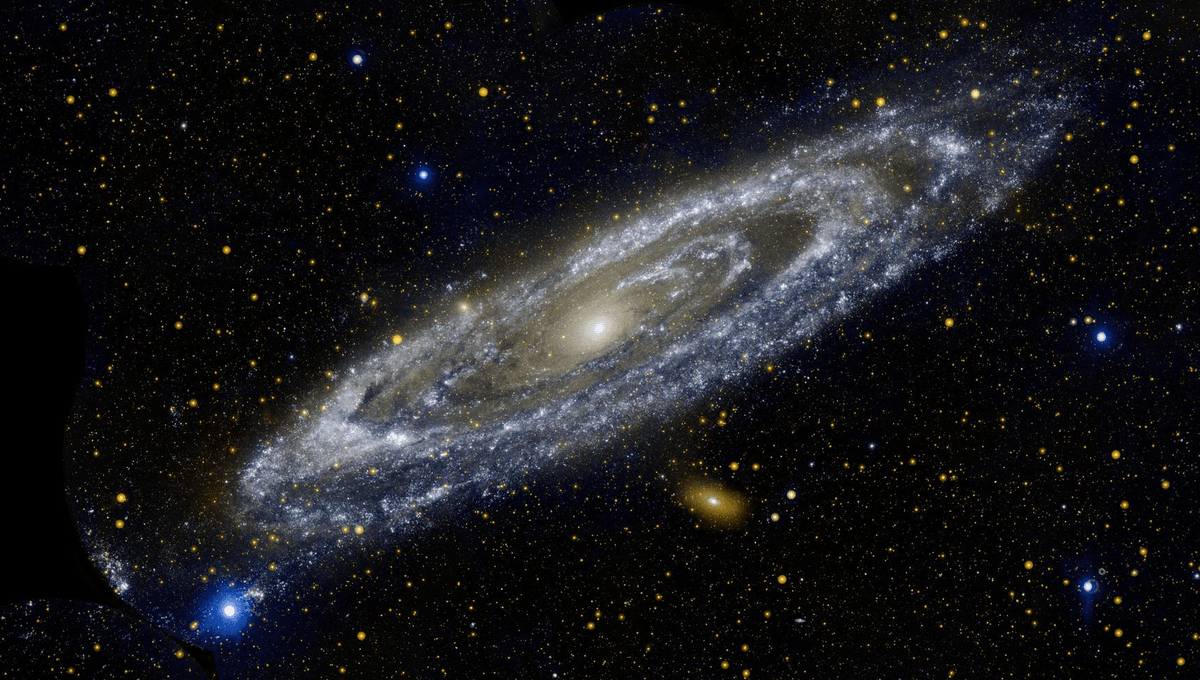
On New Year’s Day, 1925, attendees at an astronomical conference heard one of the most influential scientific presentations of all time. It proved the Andromeda Nebula is immensely distant from Earth, demonstrating that the Milky Way is not the whole universe, but one island of stars among many. It took much longer to grasp just how many, but the wide-ranging implications, including for our origins in the Big Bang, slowly gained recognition.
In some ways, the story of science is a series of discoveries of how much larger the universe is, in both space and time, than our ancestors thought, and how small and decentered we are by comparison. A century ago, Edwin Hubble delivered one of the most important of these. As with the previous examples, such as Darwin and Wallace’s theories of evolution, the work was initially only grasped by a small minority, but gradually seeped out to the wider world.
Hubble’s work had been published in The New York Times a few months before, but outside a scientific format could be easily overlooked or rejected. It was the American Astronomical Society conference that marked its crucial debut to the community that could understand the importance of what they were hearing, and how this would change everything we thought we knew about our place in the universe.
Ancient peoples thought the Sun was close enough that they imagined Icarus melting his wings by flying too close, before Eratosthenes measured the size of the Earth, and demonstrated it must be very distant at the same time. Subsequent advances revealed first the size of the Solar System, then the distances to the nearest stars and an approximate scale for the Milky Way.
Well before Hubble, some people had proposed there might be a universe beyond our galaxy, but the evidence was weak. The crucial tool was provided by Henrietta Leavitt, who demonstrated that certain stars, known as Cepheid variables have a relationship between the amount of light they emit and the period over which they brighten and fade. By comparing a Cepheid variable’s apparent brightness, and its calculated luminosity, it was possible to measure its true distance.
Leavitt’s work was used to create rough maps of the Milky Way by finding the distances to star clusters that fortunately included a Cepheid variable. Her work relied on data from the Small Magellanic Cloud and allowed approximate measurements to this and its fellow dwarf galaxy. However, the distances to the Magellanic Clouds are not much greater than the diameter of the Milky Way. Consequently, it was possible to imagine these were just the most distant representatives of the clusters Leavitt’s work revealed.
Telescopes at the time lacked the capacity to find more distant Cepheid variables and measure their cycles. It was the 2.5-meter (100-inch) Hooker telescope telescope, and Hubble’s great skill in using it, that changed things. Four years after Leavitt’s death, Hubble revealed the ultimate impact of her work, reporting the Andromeda Nebula was around 10 times more distant than the Magellanic Clouds.
Hubble’s conclusions faced stiff resistance among astronomers for several years, but eventually the evidence became overwhelming. Meanwhile, Hubble went on to study still more distant galaxies, and make the discovery for which he is most famous: that the further away from us a galaxy is, the faster it is moving away. This meant the whole universe was expanding, allowing calculations that revealed the time since everything was unimaginably small.
These two great conclusions together established both the true scale of the universe, and its age at around 14 billion years. The nearest stars are hundreds of thousands of times more distant than the Sun, but there are galaxies billions of times more distant still. The period in which humanity had been recording events represented less than a millionth of the time the universe had existed.
Some retreated into blanket denial, insisting all the calculations were wrong, but everyone else needed to acknowledge humanity was not central to the universe. Whether religious or atheist, the idea that all this had been created just for us became hard to maintain, but in return, we got a new sense of awe at the vastness in which we live, and a chance to discover more of its mysteries.
Source Link: 2025 Marks 100 Years Since Hubble Proved The Universe Is Vast With Galaxies Outside The Milky Way